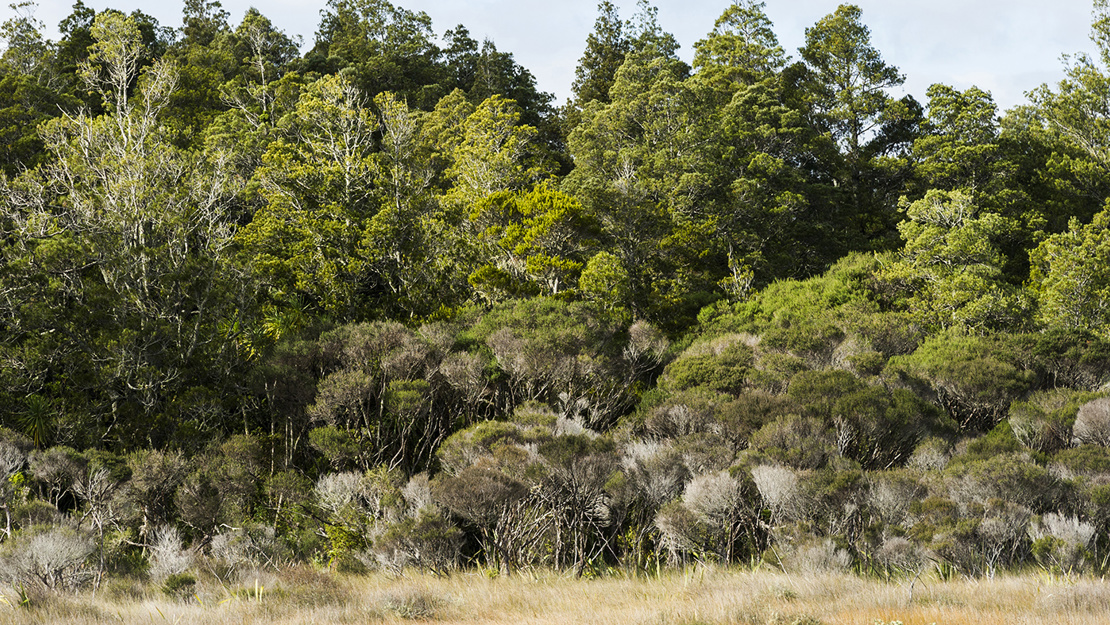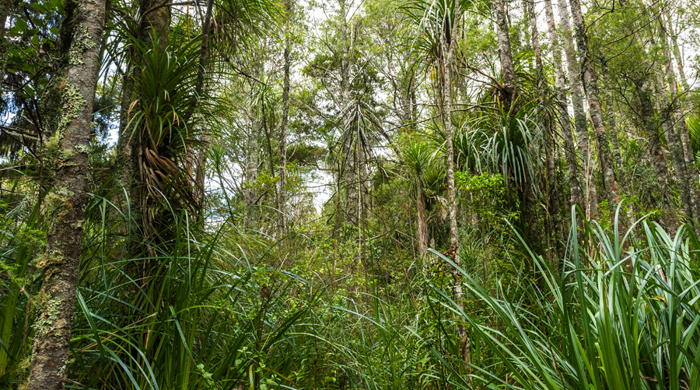Kahikatea, pukatea forest ecosystem (WF8)
Warm forest ecosystem
About this ecosystem
Swamp forests such as these occur on soils with seasonally high water tables. Temperature, humidity and soils all influence the extent and distribution of this ecosystem.
The extent of this ecosystem has been greatly reduced in Auckland as a result of historic drainage and conversion to agriculture. An excellent example can still be found at Omaha Taniko Wetlands Scientific Reserve on the Whangateau Harbour.

Flora and fauna in this ecosystem
A diverse range of species occurs in this ecosystem. Kahikatea and pukatea are common in the canopy. In areas with a high water table swamp maire is also found. In the interior, kiekie, whekī and supplejack create a dense, almost impenetrable understorey.
The fruit-bearing trees, such as kahikatea, provide food for native fauna, like kererū and tūī.

Threats to this ecosystem
This ecosystem is critically endangered and only a few examples remain in Auckland.
The clearing and draining of land are the biggest threats to this ecosystem.



